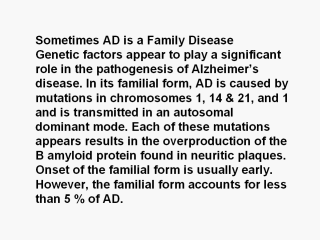| front |1 |2 |3 |4 |5 |6 |7 |8 |9 |10 |11 |12 |13 |14 |15 |16 |17 |18 |19 |20 |21 |22 |23 |24 |25 |26 |27 |28 |review |
 |
Apolipoprotein E (ApoE) as a major genetic risk
factor in Alzheimer's disease. ApoE is a normal protein, which transports
cholesterol in the circulatory system (see
www.alzheimers.org). There are
three versions of the ApoE gene: ApoE2, ApoE3 and ApoE4. Every person
inherits one version of the gene from each parent, and ApoE3 is the most
common gene of the three. About half the people with a family history of AD,
if followed into their 80s and 90s, develop it. Certain genotypes appear to
confer risk for the more common late-onset form of AD. The ApoE-e4 allele on
chromosome 19 that increases the deposition of beta-amyloid, increases the
development of AD. The loss of neurons by failure to clear overproduced amyloid in plaques might be the very most crucial result in AD. The gradual deposition of beta-amyloid oligomeres in the brain as diffuse plaques can occure with aging, and increased amyloid production can proceed throughout life. Widespread neuronal/synaptic dysfunction with neuronal loss and neurotrans-mitter deficits eventually leads to dementia. The disease is defined histopathologically, and its cause is mainly the progressive loss of neurons. |